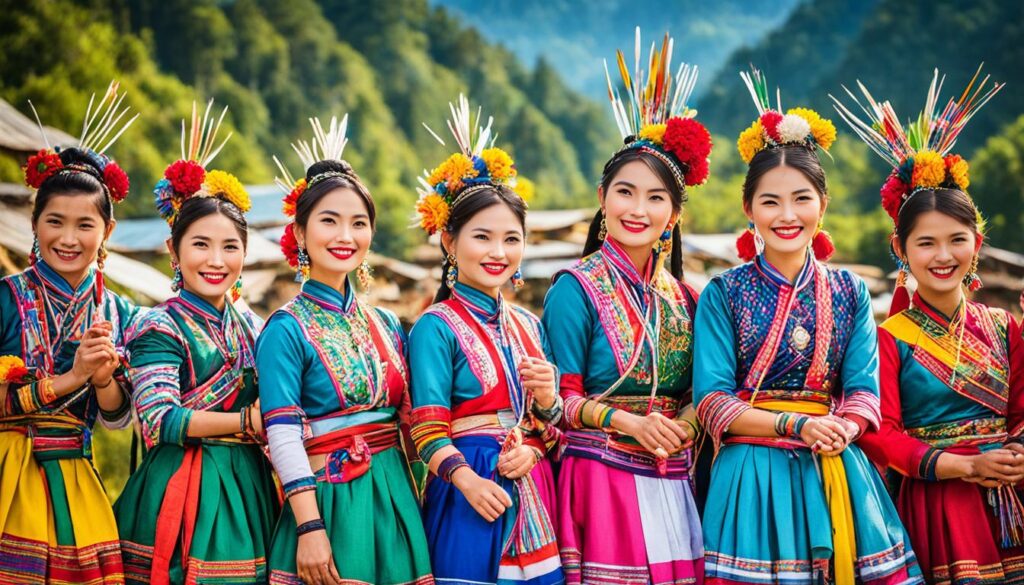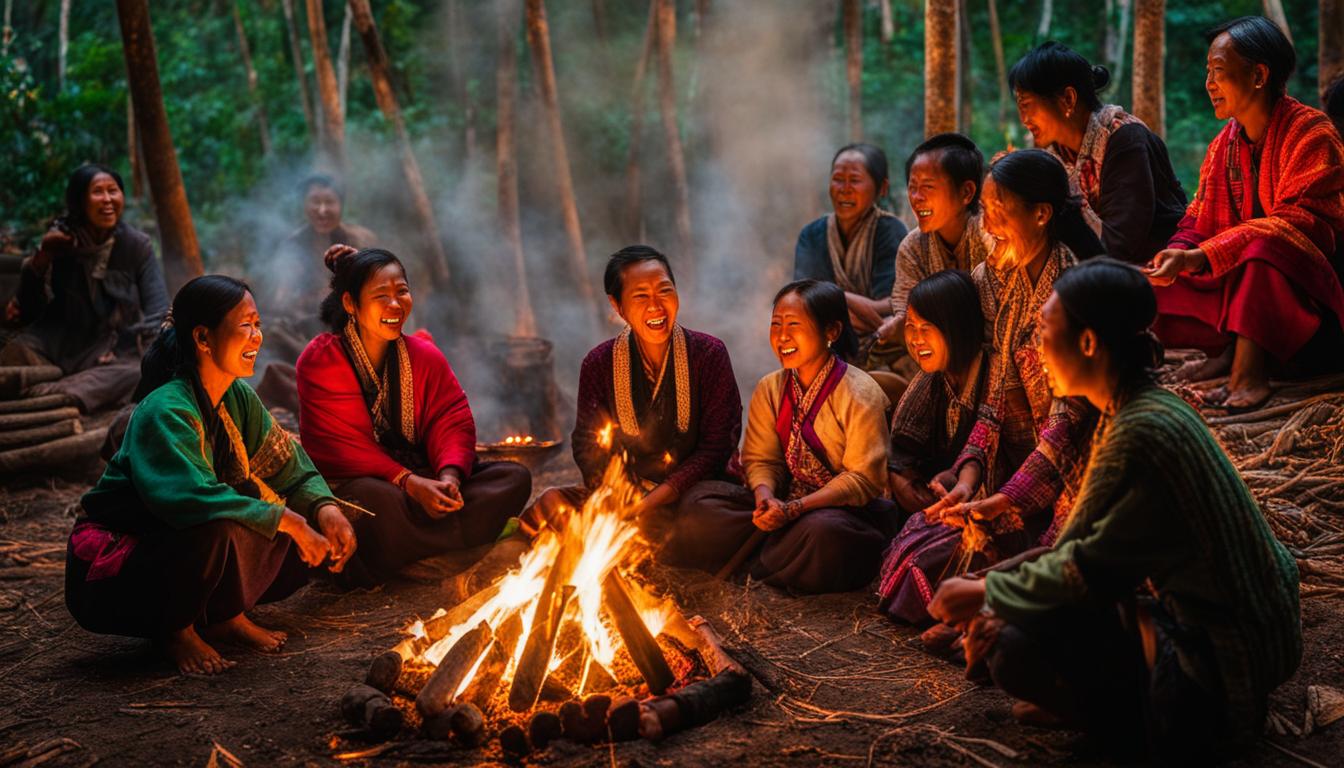The Jingpaw / Kachin Language is an indigenous and vibrant language spoken by the Kachin ethnic group, a prominent minority group in Myanmar. This unique language is not limited to its country of origin, as it has also found its place in neighboring Thailand, bridging the cultural gap between the two nations.
Languages of Thailand
Thailand, a country known for its vibrant culture and diverse traditions, is also home to a rich linguistic tapestry. With a total of 71 living languages, Thailand truly reflects the linguistic diversity found within its borders. While Central Thai serves as the official language of the country, there are several other major languages spoken by different communities across Thailand.
Central Thai: Also known as Siamese Thai, Central Thai is the most widely spoken language in Thailand. It is the official language of the country and is spoken by the majority of the population.
Isan: Isan, also known as Northeastern Thai, is primarily spoken in the northeastern region of Thailand. With its unique dialect and vocabulary, Isan has its own distinct identity within the Thai linguistic landscape.
Northern Thai: Northern Thai, also known as Lanna, is spoken in the northern region of Thailand, including Chiang Mai and Chiang Rai. This language exhibits influences from neighboring countries and reflects the cultural diversity of the area.
Southern Thai: Southern Thai is spoken in the southern regions of Thailand, including provinces such as Krabi, Phuket, and Surat Thani. It has its own distinct accents and vocabulary, influenced by local culture and traditions.
In addition to these major languages, Thailand is also home to numerous minority languages spoken by different ethnic groups. These minority languages, including the Jingpaw / Kachin language, contribute to the cultural and linguistic diversity of the country.
Quote:
“The linguistic diversity of Thailand reflects the multicultural fabric of the country, showcasing the unique traditions and identities of different communities.” – Dr. Noppadon Ngamkoonwong, Linguistics Expert
The presence of various languages in Thailand highlights the significance of promoting and preserving the linguistic heritage of these communities. Through language, we can gain insights into the rich tapestry of cultures that make Thailand truly unique.
As seen in the image above, the diverse languages spoken in Thailand form a vibrant mosaic of linguistic traditions. From Central Thai to minority languages, each language represents a unique cultural identity within the country.
Kachin Ethnic Group in Myanmar
The Kachin ethnic group is an indigenous community in Myanmar, primarily residing in the Kachin State. They are an integral part of the larger Kachin Hills region that spans across northern Myanmar and shares its border with China. The Kachin people possess a rich and diverse cultural heritage, which is deeply rooted in their traditions and customs.
The Kachin ethnic group is known for their strong sense of independence and their disciplined fighting skills. They have a reputation for their craftsmanship, especially in areas such as weaving, pottery, and wood carving. Additionally, the Kachin people have extensive knowledge of herbal healing practices, which have been passed down through generations.
Jingpho or Kachin Language
One of the key aspects of the Kachin cultural identity is their unique language, known as Jingpho or Kachin. This language is spoken exclusively by the Kachin ethnic group and plays a crucial role in preserving their heritage. The Jingpho language, being closely related to the Tibeto-Burman language family, reflects the historical roots of the Kachin people.
“Language is the key that unlocks the door to the Kachin culture, history, and traditions. It is a remarkable way to understand the indigenous knowledge and wisdom of the Kachin people.”
Kachin Ethnic Group: A Cultural Treasure
The Kachin ethnic group’s cultural traditions are deeply intertwined with their natural environment and spiritual beliefs. Their dances, music, and festivals celebrate the abundance of the Kachin Hills and celebrate the harmony between humans and nature.
The Kachin State, home to the Kachin ethnic group, has attracted attention for its stunning landscapes, including snow-capped mountains, pristine rivers, and lush forests. This incredible natural beauty has had a profound influence on the Kachin people’s way of life and is a testament to their close connection with their surroundings.
Kachin Ethnic Group: A Visual Representation
To provide a visual representation of the Kachin ethnic group in Myanmar, here is a table showcasing some key aspects of their cultural identity:
| Cultural Aspect | Description |
|---|---|
| Festivals | The Kachin people celebrate various festivals throughout the year, featuring traditional music, dance, and food. |
| Traditional Attire | Kachin men and women have distinctive traditional clothing, often adorned with intricate embroidery. |
| Spiritual Beliefs | The Kachin people have animistic beliefs and worship spirits that are believed to inhabit natural objects and landscapes. |
| Customs and Traditions | Kachin customs and traditions are passed down through oral history and play a significant role in their daily lives. |
Through their language, cultural practices, and deep-rooted connection with their land, the Kachin ethnic group in Myanmar showcases the richness and diversity of the country’s ethnic groups.

Jingpaw / Kachin Language in Thailand
The Jingpaw / Kachin Language is spoken by the Kachin ethnic group in Thailand, particularly in regions close to the border with Myanmar. This language serves as a bridge between the Kachin communities in Myanmar and their diaspora in Thailand, allowing for cultural preservation and communication. The Kachin people, originally from Myanmar, have a strong presence in the regions neighboring the border, contributing to the linguistic diversity of Thailand’s ethnic groups.
The Jingpaw / Kachin Language is an integral part of the Southeast Asian linguistic landscape, highlighting the rich heritage and history of the Kachin people. Southeast Asia, with its diverse ethnic groups and languages, presents a unique tapestry of cultures, traditions, and languages. The inclusion of the Jingpaw / Kachin Language in Thailand further enhances the vibrant mosaic of indigenous languages in the country.
With a population of approximately 1.7 million in Myanmar, the Kachin ethnic group possesses a distinct cultural identity rooted in their language, customs, and traditions. By maintaining and passing on the Jingpaw / Kachin Language to future generations, the Kachin community in Thailand preserves their ethnicity and strengthens their connection to their ancestral homeland.
Being aware of and celebrating the ethnic diversity within Thailand is crucial for fostering a sense of inclusivity and understanding among its people. The preservation and recognition of languages like Jingpaw / Kachin contribute to the cultural fabric of the country, enriching the tapestry of Thailand’s ethnic groups.
In conclusion, the Jingpaw / Kachin Language represents the cultural heritage of the Kachin ethnic group, originating from Myanmar, and is an important part of Thailand’s ethnic diversity. It serves as a linguistic link connecting the Kachin communities in Thailand and Myanmar, while also reflecting the Southeast Asian linguistic landscape. By valuing and preserving indigenous languages like Jingpaw / Kachin, Thailand preserves its rich cultural tapestry and strengthens its multicultural identity.
Conclusion
The Jingpaw / Kachin Language is a vital component of Thailand’s ethnic diversity and cultural heritage. Representing the Kachin ethnic group, this language embodies their unique customs, traditions, and sense of identity. Moreover, it offers a fascinating insight into the rich cultural history of Myanmar’s diverse ethnic groups.
By recognizing and preserving the Jingpaw / Kachin Language, Thailand acknowledges and values the importance of indigenous languages within its borders. Embracing linguistic diversity is crucial for fostering inclusivity and maintaining the ethnic mosaic that characterizes the country.
As one of the many indigenous languages spoken in Thailand, the Jingpaw / Kachin Language serves as a beautiful testament to the country’s commitment to celebrating and upholding its rich cultural tapestry. The presence of this language highlights Thailand’s dedication to embracing and honoring the diverse heritage of its ethnic communities.
